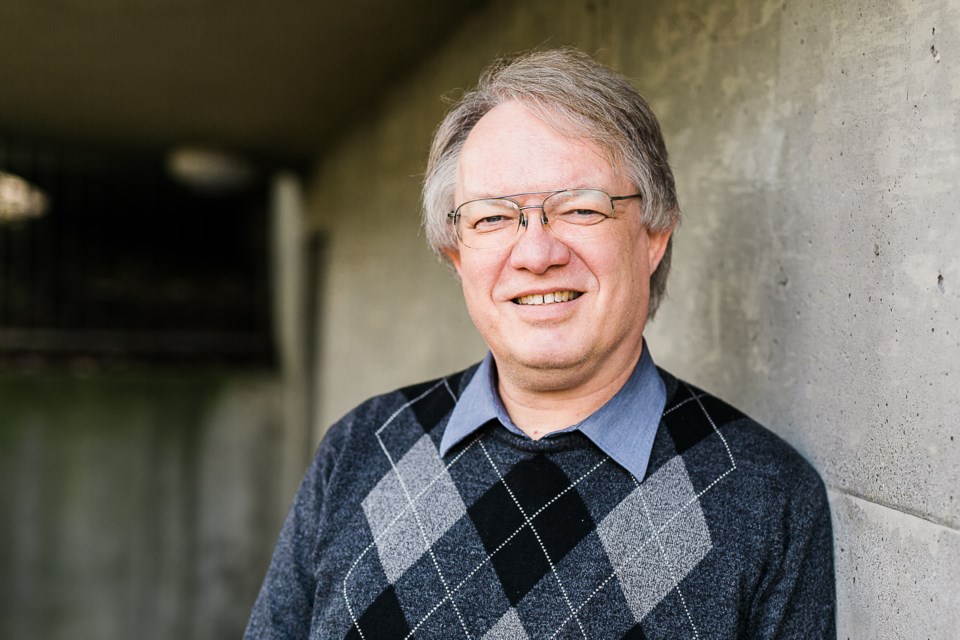The night he realized what he discovered, Squamish mathematics historian and professor Glen Van Brummelen ran up and down the halls of the dorm where he was staying to teach a math camp, looking for someone to tell his news, he told National Public Radio (NPR) last month.
“I think they probably thought I was crazy,” he said.
Soon, the world would know of his discovery.
While researching late medieval and early Renaissance astronomy in the summer of 2019, Van Brummelen noticed a surprising usage of a decimal point in an ancient table.
Van Brummelen was in Michigan at the time, teaching his annual MathPath summer camp for middle school students and doing research at night.
Before this discovery, it was widely held that German astronomer Christopher Clavius was the first to use the decimal point in 1593. Van Brummelen discovered that Giovanni Bianchini, an Italian astrologer, used the decimal point about 150 years before.
In Bianchini's time, astrology was serious business, unlike our less serious conception of astrology today—horoscopes in newspapers.
"It was a much more precise discipline. And it still is today, actually. What you read in the newspapers just scraped the surface of what professional astrologers will do. In fact, astrology at that time was probably the leading source of difficult math problems for astronomers to solve," Van Brummelen told The Squamish Chief this week.
At that point, astrology was a fundamental aspect of running a business, Van Brummelen noted.
Bianchini was likely using the decimal point "to do measurements of altitudes and of distances on the Earth's surface using this instrument, biffa."
After that, people used Bianchini's decimal system, but not in full, Van Brummelen said.
It was used for the whole numbered parts, not for the fractional parts.
"It took the revival of Clavius 150 years later for that decimal point to be rediscovered, to be re-reintroduced to the world."
Why the decimal point matters
"The reason that decimal point and our decimal fractions are so important is that we can now use a single number system that can be used for surveying or for astrology or for calculating the price of our grocery bill," said Van Brummelen, whose paper on the discovery, Decimal fractional numeration and the decimal point in 15th-century Italy, was published online in February.
"You can use the decimal system for all sorts of applications out there. And its ability to transfer and be a universal system for all sorts of purposes is what makes it so powerful."
Before his role at Trinity Western University, Van Brummelen was a founding faculty member and mathematics division co-ordinator of the now-shuttered Quest University.
At the time of the discovery, he was working on translating documents from Latin with Darcy Otto, a fellow former Quest mathematics professor.
The discovery has made waves worldwide, with about 120 articles published on it in various languages, Van Brummelen said.
Why not discovered sooner?
Asked why he thinks the discovery wasn't made sooner, Van Brummelen humbly said it may be he has a niche skillset.
"There aren't that many people who study medieval science," he said. "And there are lots of manuscripts out there that haven't been read very carefully. It requires a rather unique collection of skills. And the one skill that I happened to luck into was both being able to read the Latin and understand the mathematics behind it; and to be able to work with the Latin, the astronomy, and the mathematics all at once. ... There aren't all that many people who are willing to devote their research careers to that weird collection of talents."
He said he prides himself on being a mathematics teacher first, before a researcher. He said the math phobia many have stems from the way it is usually taught.
He tells of taking 17 math courses in the last year of his undergraduate degree in mathematics
"I found that in all 17 of those courses, these instructors were answering questions that I had never asked," he said, noting that math is not often taught with the why question in mind, especially at younger grades.
"When we're working on math, we're basically being trained to pass a test. But the way that math—or any system of knowledge—really becomes ingrained in us is if we know why it's important, and we have a way to attach it with our daily experience," he said.
"So I decided to go into the history of math as my career basically to help answer those why questions and then eventually bring them back to the classroom."
What is next
As for what is next, Van Brummelen has his own why questions to answer about Bianchini.
He said that the work the decimal point discovery came from was not Bianchini’s most significant work.
“There's a lot more to discover about this man,” he said. “He was right on the border between the medieval period and the Renaissance…. And he may be one of the people who really helped to trigger the scientific side of the Renaissance in Italy. And so, the question is, where did he get his source of inspiration for all of this? Was he simply naturally brilliant? Or were there some sources that helped him? We still don't quite know the answer to that.”
Find out more on the Trinity Western University website.



